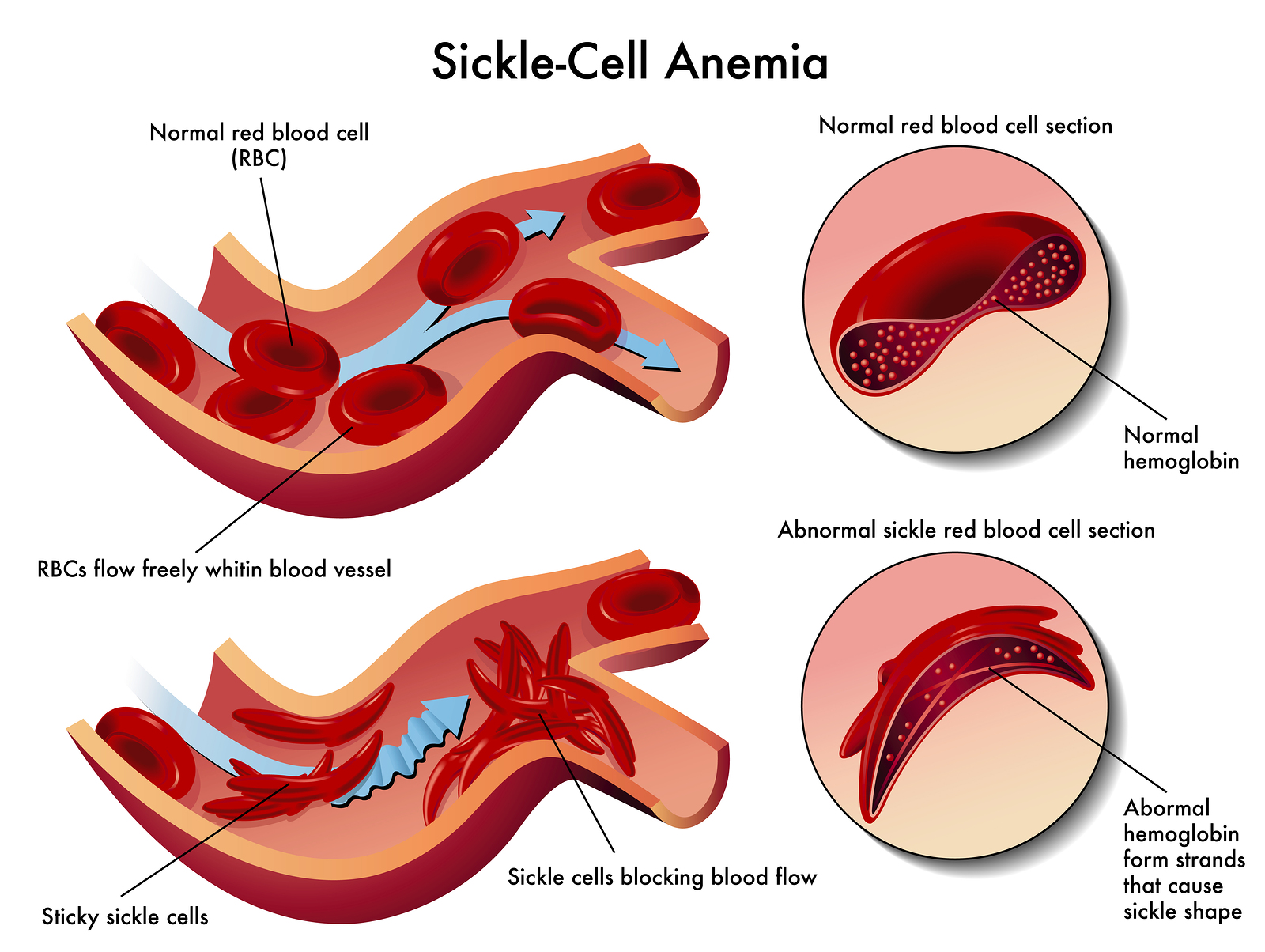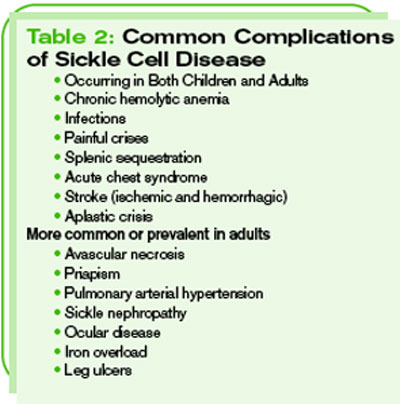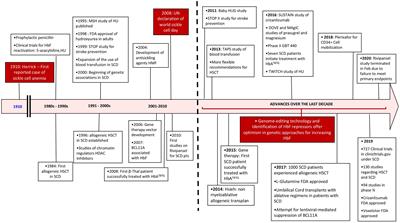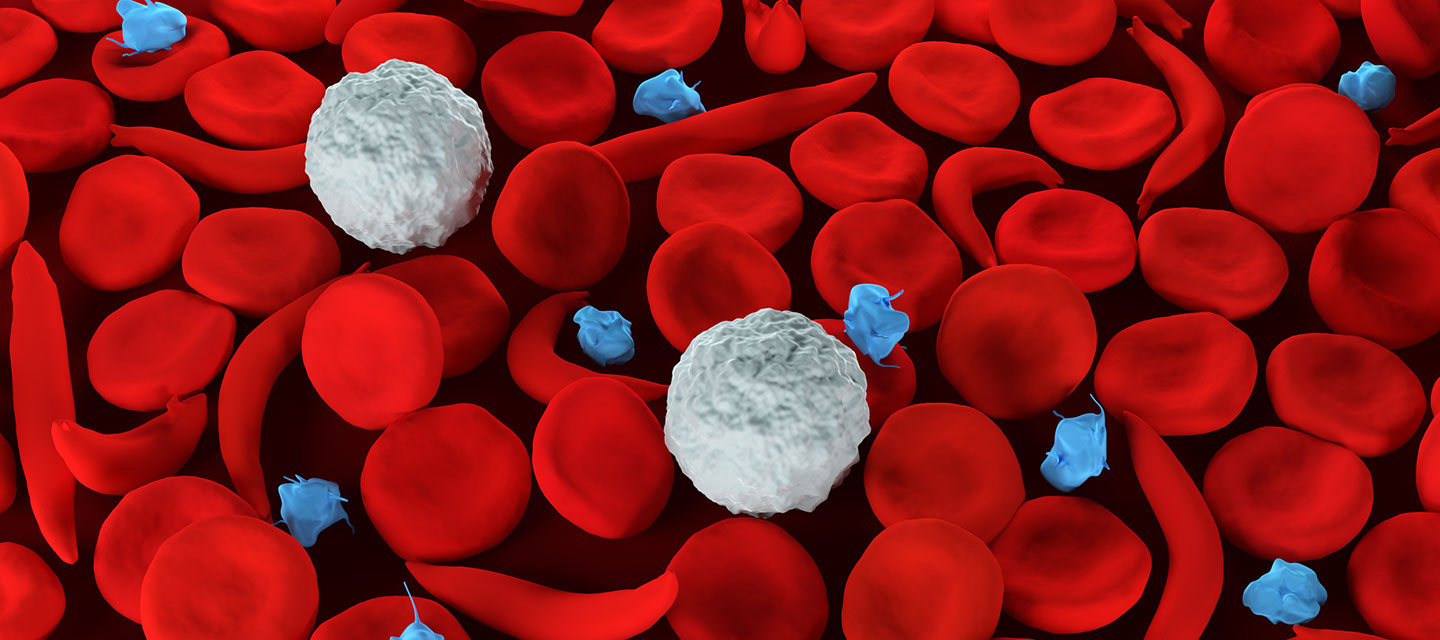Sickle Cell Disease Risk Factors
Sickle cell disease risk factors. Even when the fetal hemoglobin level is low one can predict that small increments in the. Older age macroalbuminaria and high diastolic blood pressure are among some of the risk factors significantly associated with onset of chronic kidney disease. People from regions that have endemic malaria are more likely to be carriers.
Pain is the most common cause of acute morbidity in sickle cell disease and signals underlying sudden marrow ischemia or necrosis. Sickle cell disease or Sickle cell anemia can lead to a host of complications including. Sickle cell disease is characterized by the presence of sickle or crescent-shaped red blood cells in the bloodstream.
Rates and risk factors The pain rate episodes per year is a measure of clinical severity and correlates with early death in patients with sickle cell anemia over the age of 20. Objective Sickle cell disease SCD is a group of inherited blood disorders. Osteonecrosis a form of ischemic bone injury that leads to degenerative joint disease affects 30 of people with sickle cell disease.
Risk Factors for Sickle Cell Anemia. The central feature of this chronic condition is pain. Several identified risk factors exacerbate the impact of pain on quality of life QOL in SCD.
Commitment to Helping Make Repatha Affordable for All COVID-19 Eosinophilic Esophagitis Opioid-Induced Constipation Sickle Cell Disease Strains of C. For example an acidic environment in the bloodstream can cause the sickling process to increase. Scopus Web of Science.
Although osteonecrosis most commonly affects the femoral head often bilaterally with asymmetric clinical and radiographic progression many people with sickle cell disease also present with multifocal joint involvement. Sickle Cell Disease occurred due to the mutations in the hemoglobin beta HBB gene. The mortality rate for the study population was 16 per 100 patientsyear.
Sickle Cell Disease Epidemiology Insights. However there are relatively fewer investigations of strengths-based resilience variables that might buffer the influence of pain on living with SCD.
Although osteonecrosis most commonly affects the femoral head often bilaterally with asymmetric clinical and radiographic progression many people with sickle cell disease also present with multifocal joint involvement.
Sickle cell anemia causes the production of abnormal hemoglobin. Sickle cell disease SCD is characterized by multi-organ morbidity and an increased risk of early death. The mortality rate among patients with Sickle Cell Anemia was higher than the controls p003. Rates and risk factors The pain rate episodes per year is a measure of clinical severity and correlates with early death in patients with sickle cell anemia over the age of 20. A single nucleotide mutation leads to a. BackgroundSickle cell disease SCD is the most common severe hereditary blood disorder in the United States. 13 14 Our analysis of the epidemiology of pain in a contemporary. Older age macroalbuminaria and high diastolic blood pressure are among some of the risk factors significantly associated with onset of chronic kidney disease. Scopus Web of Science.
13 14 Our analysis of the epidemiology of pain in a contemporary. Several identified risk factors exacerbate the impact of pain on quality of life QOL in SCD. Although osteonecrosis most commonly affects the femoral head often bilaterally with asymmetric clinical and radiographic progression many people with sickle cell disease also present with multifocal joint involvement. The atypical hemoglobin molecules called hemoglobin S are present among the patients. 13 14 Our analysis of the epidemiology of pain in a contemporary. Scopus Web of Science. Osteonecrosis a form of ischemic bone injury that leads to degenerative joint disease affects 30 of people with sickle cell disease.






































Post a Comment for "Sickle Cell Disease Risk Factors"